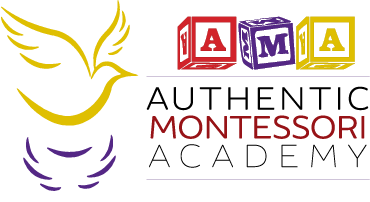Educational Comparison
| Conventional | Montessori |
|---|---|
| Pervasive emphasis on grades, merits, and social conformity. | Self-humanization as root motivation. Teachers have strong observational skills and direct lessons based on their observations for each child. |
| Children are grouped chronologically by only one age per class. | Classrooms have students with a 2 to 3-year age span. Older children mentor and younger children learn from their example. Respect is paramount. |
| Children are seated at a desk most of the time for group lessons. | Children work at tables, on a carpet, or on a mat. They have freedom of movement. They enjoy natural, sensory and cultural experiences. |
| Children are taught using society’s conforming values. | Children are in direct contact with developmental materials. They are provided with lessons based on their individual learning pace. |
| Class schedules limit the child’s involvement. | Long blocks of time for engaging in work permits invaluable concentration. |
| Children are not interrupted by bells or adult interventions. | Relatively few interruptions. A child may work on something for as long as they are engaged in their work. |
| Postponement of cognitive development until Grade 1. | Critical cognitive skills are developed before the age of six. Children learn to problem solve. |
| Teachers “correct” and point out “errors” in the student’s work. | Children learn through self-corrective materials and through their peers. The role of the teacher is to provide the lessons, sequenced steps, and to guide the child along the way with the right assistance. |
If you have any questions about the Montessori philosophy, pedagogy or curriculum, you can watch a video on our Learn More About The Montessori Way
